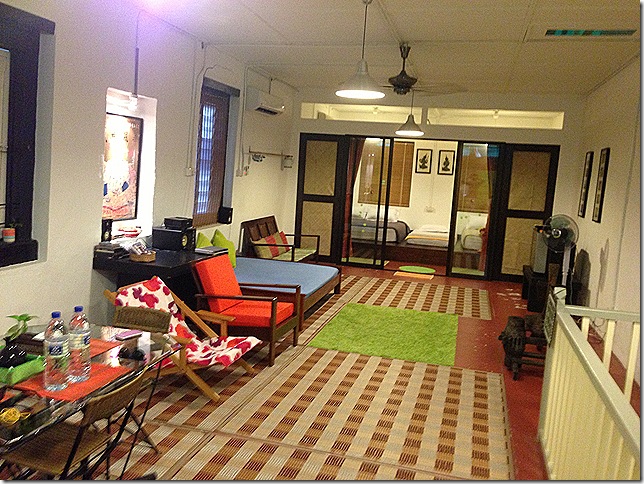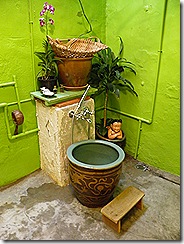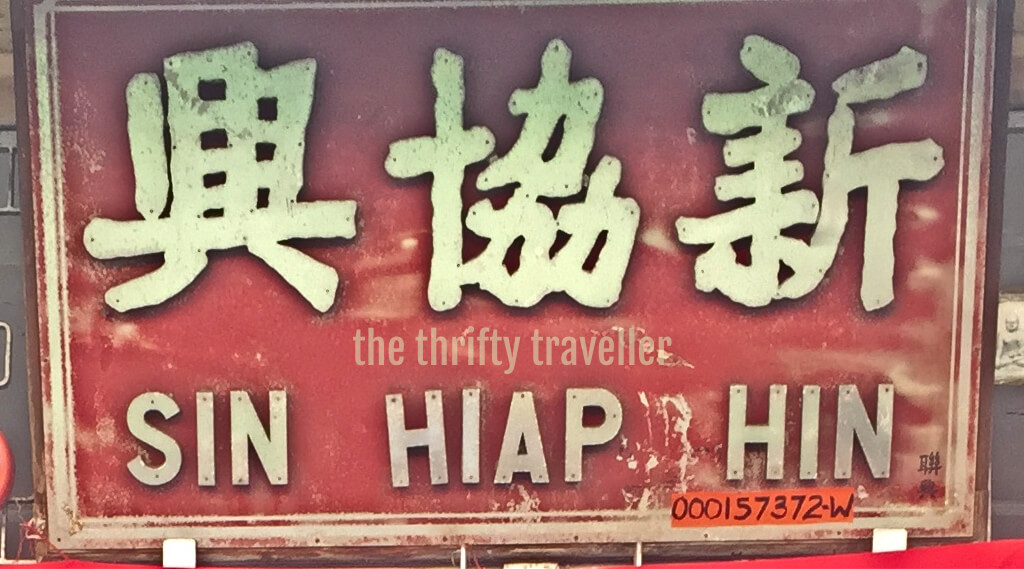
A rare example of living heritage can be found at Sin Hiap Hin, a drinking hole at No.5 Jalan Jawa (Java Lane) in the Kampung Jawa area of Melaka.
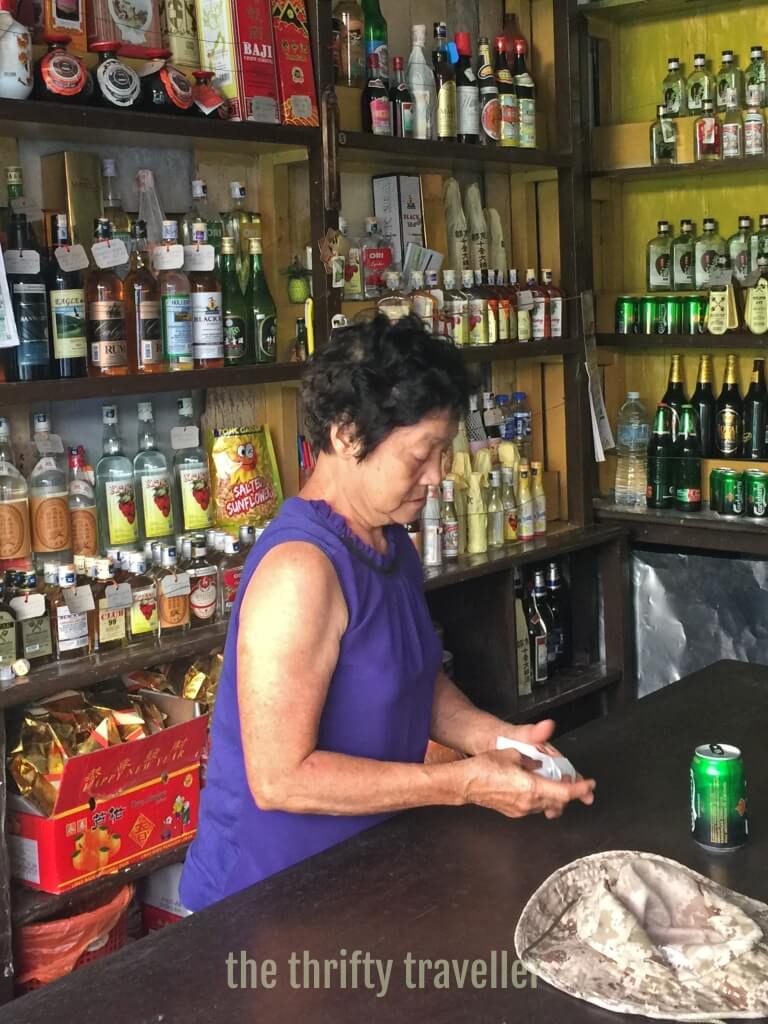
I went there recently (Feb 2019) and had a couple of drinks served by the friendly and chatty landlady, Doris Lee, who told me a bit about its history.

This bar has been around for a century and is a hangover (excuse the pun!) from the days when this was a seedy part of town with opium dens, gambling joints and brothels. Indeed, Doris told me that this place used to be an opium den before it became a bar, pointing up the stairs where the opium smokers would puff their way to oblivion.
The area is much quieter now and the bar’s neighbours include an old fashioned barber shop, where you can have a cut-throat shave and your ear wax removed, and a pet shop selling songbirds in elaborate bamboo cages.
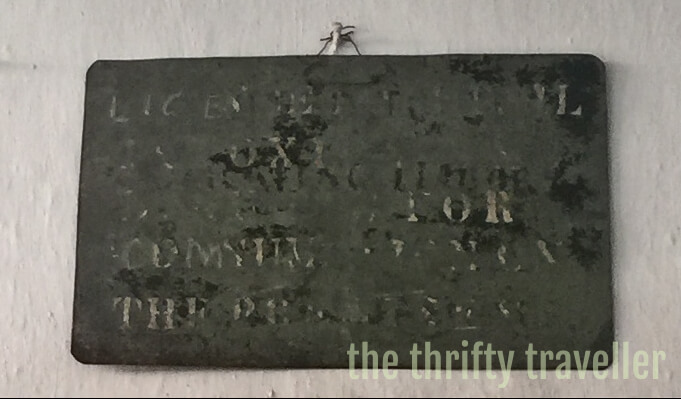
This a bar for hardened drinkers. For a start it opens at 9 o’clock in the morning and is often closed by 6pm. The interior is rather Spartan. This is not the place to catch a Premier League match while munching grilled buffalo wings and surfing the web. All there are here are half a dozen wooden stools, an ashtray (remember those?) and a vintage wooden bar which has been polished by countless elbows and beer slops. The shelves you see in the photo are the originals from when the bar opened and contain Chinese herbal liquor, rice wine, Indian whisky, cheap hard spirits and beers.
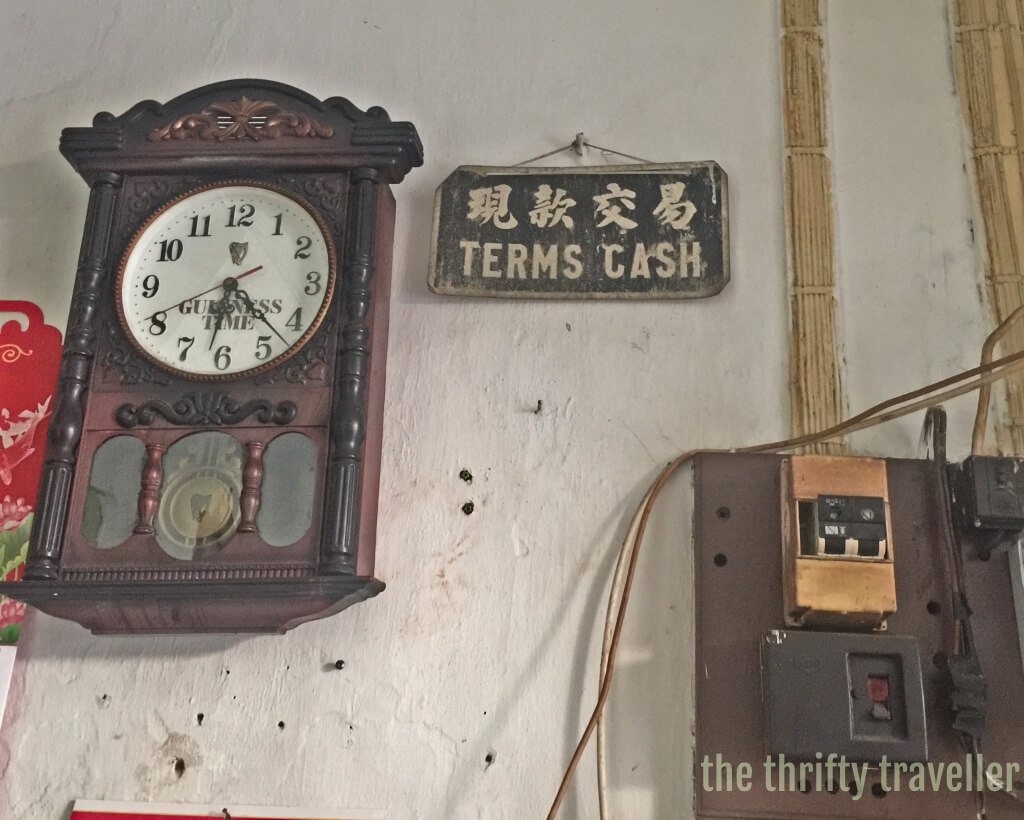
The bar used to be popular with boatmen working on the Melaka river which is just a stone’s throw away. During colonial times it had many British officials among its clientele. It’s the sort of place that you could imagine Nabby Adams, the boozy policeman in Anthony Burgess’ novel Time for a Tiger, would like to frequent for an early morning beer to quench his insatiable thirst.
Japanese soldiers frequented this bar too during their brief but brutal occupation of Melaka in the 1940s. Swigging rice wine in Sin Hiap Hin’s somewhat dingy atmosphere no doubt brought home nostalgic memories of those tiny bars in cities like Tokyo or Osaka
Since there are no boatmen anymore and the Brits and Japs have long gone, patrons are more likely to be those down on their luck or low income workers tanking up on strong drinks for just a few Ringgit per shot.
Business from local workers is not what it used to be but thanks to blogs like mine, a steady stream of tourists, both local and foreigners, have discovered this place and drop in to soak up the atmosphere of days gone by. A wall calendar serving as a visitors’ book records comments left by tourists from Australia, UK, France, Germany, Poland, Canada and Malaysia, all praising the atmosphere, the local rice wine and the ‘cute aunty’ (Doris).
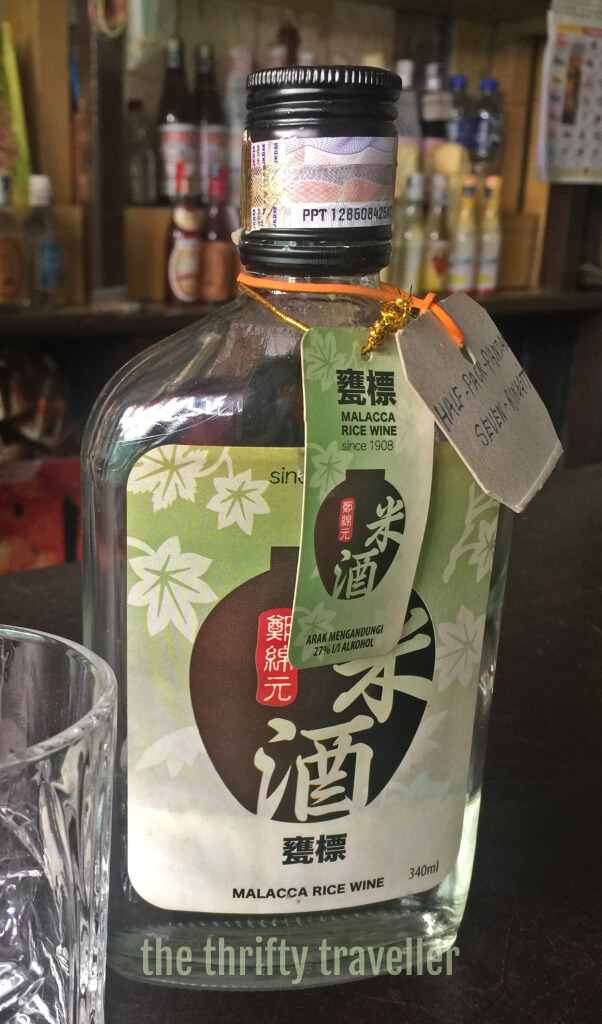
At Doris’s suggestion I tried a glass of Pandan flavoured Malacca rice wine which she sells for RM 7 per half-peg. It has been made by a local firm in Melaka since 1908 which must make it one of the longest established booze manufacturers in Malaysia, much older than Tiger or Anchor beer for example. The taste is powerful, like Korean soju, with a smoky pandan aroma. The alcohol content is 27%. Doris said you’ll only find this drink at her bar. Other flavours include lychee. You can buy a bottle for only RM 15 which is a nice souvenir to take home.
I’m sure Doris and her husband, who is the great grandson of the founder, would welcome your business if you are in the area.


